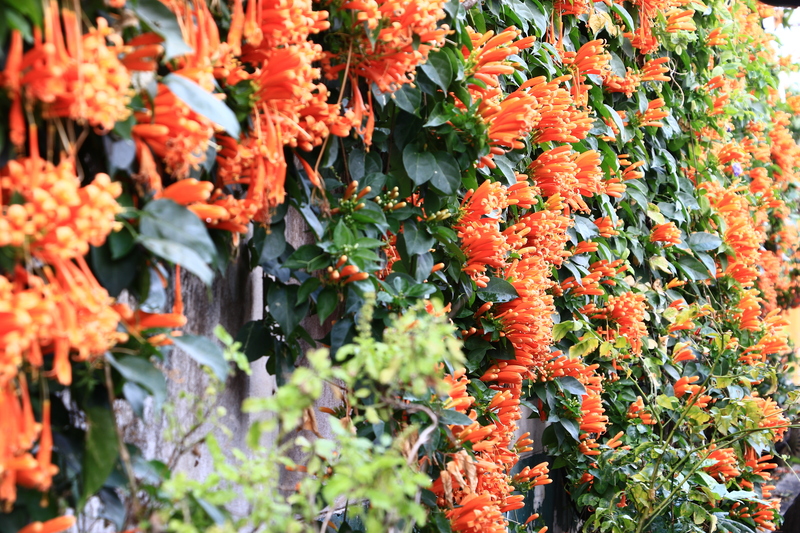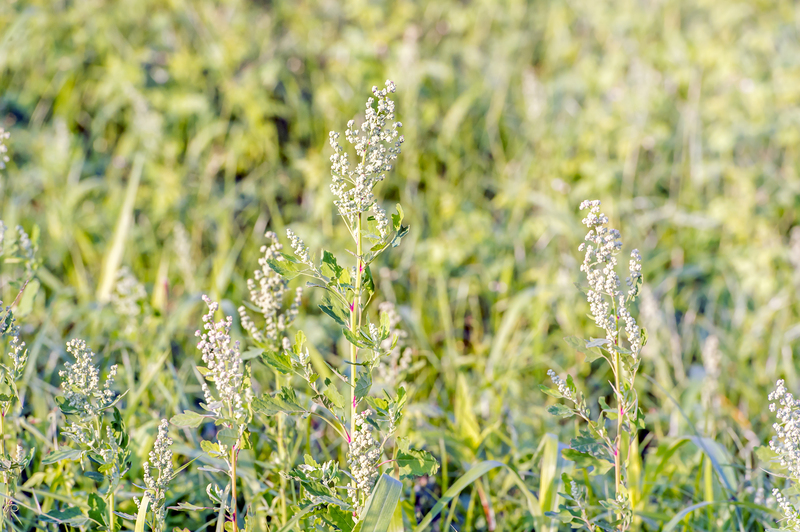Keep Your Green Spaces Safe as Winter Approaches
Posted on 28/06/2025
Keep Your Green Spaces Safe as Winter Approaches:
As the chill of winter draws near, it's essential to prepare your green spaces to withstand the colder months. Whether you manage a city park, a school playground, a home garden, or a business landscape, protecting your outdoor assets is crucial for ensuring their health and function come springtime. In this comprehensive guide, you'll find expert tips, essential maintenance routines, and valuable strategies to keep your green spaces safe as winter approaches.

Why Prioritize Winter Protection for Green Spaces?
It's tempting to let your landscaping wait until warmer times, but winterizing your green areas offers clear advantages.
- Healthier Lawns and Gardens: Proper winter care ensures your soil, grass, and plants have the best chance of survival through freezing temperatures.
- Reduced Long-Term Expenses: Preventative maintenance is always less costly than replacing damaged trees, repairing eroded soil, or replanting entire gardens after winter damage.
- Safer Environments: Pruned trees and cleared paths reduce the risk of accidents and injuries caused by falling branches, icy walkways, or hidden hazards.
- Preserved Curb Appeal: Well-maintained green spaces are always attractive--keeping them protected means your property looks inviting all year.
Common Winter Challenges for Green Spaces
In order to protect your green spaces during winter, you need to understand the risks typical of the season. Here are some challenges your lawns, trees, and gardens may face:
- Freezing Temperatures: Cold snaps can kill vulnerable plants and stress hardy ones.
- Frost Heaving: Repeated freezing and thawing causes soil to expand and contract, pushing plants and roots out of the ground.
- Snow Accumulation: Heavy snow can break branches and compact delicate foliage.
- Ice Damage: Ice storms can snap limbs, collapse smaller shrubs, and create hazardous surfaces.
- Salt and Chemical Exposure: Salt used for de-icing roads and sidewalks can run off into green spaces, harming soil and plant health.
- Reduced Sunlight: Shorter days and cloud cover can impact growth and weaken plants.
- Animal Activity: Winter-hungry animals, like deer and rodents, may feed on exposed bark, roots, and young shoots.
Essential Steps to Keep Your Green Spaces Safe in Winter
1. Assess and Plan Early
The most effective winter protection begins before the first frost. Conduct a thorough assessment of your landscape. Look for dying or diseased branches, soil erosion, vulnerable root zones, and areas prone to ice build-up. Make a checklist and gather supplies such as mulch, burlap, pruning tools, and protective wraps.
2. Lawn Preparation for Winter
- Mow Smart: As the season ends, make your last mow shorter (about 2-2.5 inches). This helps prevent snow mold and fungal growth.
- Aerate and Fertilize: Aeration helps roots absorb nutrients and oxygen before the ground freezes. Follow with a slow-release fertilizer to feed your lawn over winter.
- Rake and Remove Debris: Fallen leaves harbor pests and diseases. Keep grass clear to let sunlight penetrate and prevent suffocating thatch.
- Seed Bare Patches: Overseeding ensures robust grass coverage so exposed soil isn't at risk of erosion or weed growth.
3. Tree and Shrub Winterization
- Prune Dead and Damaged Branches: Winter storms easily topple compromised branches. Prune carefully and avoid heavy trimming, which may slow healing.
- Wrap Vulnerable Trunks: Use tree guards or burlap wraps for young or thin-barked trees to protect against frost cracks and animal damage.
- Mulch Roots: Mulch acts as insulation around the base of trees and shrubs--apply a 2-4 inch layer several inches away from the trunk to lock in warmth.
- Stake Small Trees: Protect saplings with stakes and soft ties to shield them from winter winds and heavy snow.
4. Protecting Perennials, Flowerbeds, and Vegetables
- Cut Back and Clean Up: Remove spent stems, stalks, and leaves to prevent rot and overwintering pests.
- Apply Mulch Generously: A thick blanket of mulch (straw, shredded leaves, or wood chips) safeguards fragile plants and bulbs from temperature fluctuations.
- Cover Delicate Plants: Use garden fabric, cloches, or old blankets on the coldest nights. For perennial beds, try hoops and plastic sheeting for temporary greenhouses.
- Harvest and Store: Gather any remaining vegetables and herbs before the first hard frost. Store them indoors or in a root cellar.
5. Winterize Water Features and Irrigation Systems
- Burst-Proof Your Pipes: Drain hoses, irrigation lines, and fountains to prevent freezing and cracking.
- Clean and Store Equipment: Remove pumps, clean filters, and store removable water features indoors if possible.
- Add Floating Devices: If you have a pond, floating items like foam or soccer balls can prevent ice from completely sealing the surface, maintaining a breathing hole for aquatic life.
6. Prepare Walkways and Hardscape Areas
- Clear and Repair Paths: Remove moss, fallen leaves, and trip hazards. Repair cracks and low spots that might hold ice or snow.
- Apply Eco-Friendly De-icers: Choose plant-safe alternatives to rock salt, such as calcium magnesium acetate, to protect surrounding lawns and flower beds.
- Add Sand or Gravel: Improve walkway traction with sand or small gravel, minimizing slippage on icy days.
7. Monitor for Animal Damage
- Install Physical Barriers: Fencing or mesh wraps around trunks, beds, or shrubs can deter rabbits, deer, and rodents.
- Discourage Browsers: Apply repellents and keep food waste at bay to make your landscaping less attractive to winter wildlife.
- Regular Inspections: Check your protective measures after storms and adjust as needed throughout the winter.
Going Beyond: Eco-Friendly Winter Care for Green Spaces
Protecting green spaces in winter doesn't have to come at the expense of the environment. Here's how you can be proactive and sustainable:
- Use Organic Mulch and Fertilizers: Natural materials improve soil health and avoid chemical runoff.
- Compost Leaves and Plant Debris: Instead of bagging up yard waste, compost it for nutrient-rich garden amendments next spring.
- Limit Salt-Based Products: Salt build-up damages both plants and groundwater. Opt for alternatives, and apply conservatively.
- Support Local Wildlife: Leave select seed heads or install bird feeders to maintain winter food sources for beneficial birds.
- Plan for Pollinators: Some beneficial insects overwinter in leaf litter or brush piles--designate areas where cleanup happens later in spring.
Common Mistakes to Avoid While Preparing Green Spaces for Winter
- Over-Fertilizing: Too much fertilizer late in the season can prompt new growth easily killed by frost.
- Sealing Plants Too Early: Coverings can trap excess moisture and cause rot if applied before consistent cold arrives.
- Neglecting Tool Maintenance: Dirty, dull garden tools spread disease and make winter tasks harder.
- Forgetting to Water: Plants still need moisture until the ground freezes--dry soil is at greater risk of winterkill.
- Ignoring Pest and Disease Prevention: Dormant diseases can rear up in spring after hiding among infected leaves or mulch.
Benefits of Keeping Your Green Spaces Safe in Winter
Investing time and resources in protecting your green spaces during winter brings lasting rewards:
- Improved Plant Survival Rates: Proper covering, mulching, and watering keeps roots alive and ready to flourish in spring.
- Enhanced Curb Appeal Year-Round: Healthy, well-maintained landscapes look better even during dormant months.
- Lower Maintenance Costs: Preventing winter damage means less time and money spent on repairs, replanting, and cleanup.
- Boosted Environmental Value: Thriving green spaces support biodiversity, cleaner air, and local ecosystems.
- Safe, Enjoyable Outdoor Areas: Useable pathways and hazard-free play areas ensure everyone can enjoy nature, even in the cold.
Key Winter Maintenance Tips for Safe Green Spaces
- Start Early--plan, assess, and gather supplies before sudden freezes arrive.
- Layer Mulch--insulate plant roots and garden beds thoroughly.
- Prune Wisely--remove weak branches without excessive heavy trimming.
- Use Protective Coverings--for delicate and newly planted species.
- Remove Debris--keep green spaces clear of fallen leaves, dead plants, and hazards.
- Winterize Equipment--drain, clean, and store hoses and irrigation tools.
- Monitor Regularly--check your green spaces after storms or thaws for damage or new risks.
Preparing Different Types of Green Spaces for Winter
Commercial and Public Spaces
*Large green areas like parks, campuses, and business grounds require extra attention.* Assign a dedicated team or service to regularly inspect, clean, and maintain turf, trees, and public walkways. Prioritize safety with clear signage and accessible salt bins.
Residential Gardens and Lawns
*Homeowners should focus on regular raking, mulching, and pruning.* Disconnect hoses, blow out irrigation systems, and ensure any play equipment is secure. Use lightweight row covers for vegetable patches that may be harvested late into fall or early winter.
Community Gardens and Urban Greenspaces
*Organize volunteer clean-ups and seasonal workshops.* Install compost bins for fall debris and foster pollinator-friendly practices by leaving select areas undisturbed. Label young or sensitive trees for group care throughout the cold months.
Conclusion: Protect Your Outdoor Spaces This Winter
With a little planning, consistent effort, and eco-friendly thinking, you can keep your green spaces safe as winter approaches. Whether you're caring for a backyard, business grounds, or community park, these strategies will ensure your landscapes not only survive but thrive--ready to burst into new life with warmer weather.
*Don't let cold weather catch you by surprise. Start preparing your green spaces now so you can enjoy their beauty, safety, and vitality for years to come.*

Frequently Asked Questions on Winter Safety for Green Spaces
How late is too late for winter lawn preparation?
It's best to winterize before the ground consistently freezes and snow begins to fall. However, tasks like pruning, mulching, and clearing debris remain beneficial as long as you can access the landscape.
Can I use leftover summer fertilizer for winter prep?
Use fertilizers specifically formulated for fall and winter. These products support root development without prompting vulnerable new growth, unlike traditional "summer" fertilizers.
Should I water my garden during winter?
If your area experiences dry spells and above-freezing temperatures, watering every few weeks helps keep roots from drying out. Once the ground is frozen, regular watering is not needed.
What are the best eco-friendly de-icers?
Calcium magnesium acetate, sand, and gravel are all effective alternatives to salt. Always read labels and avoid over-application.
Take Action Today--Your Green Spaces Will Thank You!
By taking these steps to protect and maintain your green areas in winter, you're ensuring safe, resilient, and thriving landscapes for everyone to enjoy. Don't wait--start winterizing your green spaces today for a healthier, more beautiful outdoor environment tomorrow!



